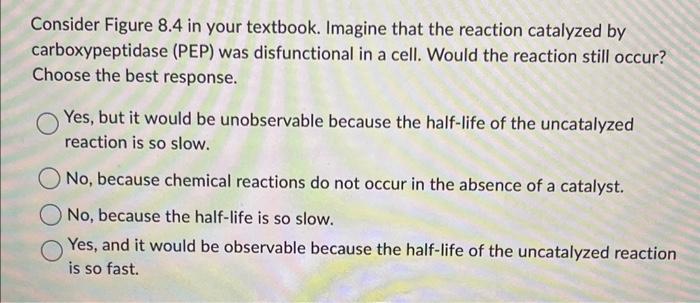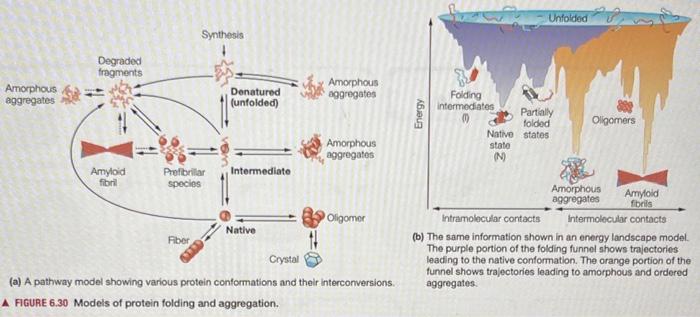Answered step by step
Verified Expert Solution
Question
1 Approved Answer
PLEASE HELP WITH BOTH QUESTIONS!! When an enzyme catalyzes a reaction, which free-energy values are affected? See Figure 6.3 if you need help! Delta G
PLEASE HELP WITH BOTH QUESTIONS!! 



When an enzyme catalyzes a reaction, which free-energy values are affected? See Figure 6.3 if you need help! Delta G for the reaction Free energy of the reactant Free energy of the product Free energy of the transition state All of the above None of the above Consider Figure 8.4 in your textbook. Imagine that the reaction catalyzed by carboxypeptidase (PEP) was disfunctional in a cell. Would the reaction still occur? Choose the best response. Yes, but it would be unobservable because the half-life of the uncatalyzed reaction is so slow. No, because chemical reactions do not occur in the absence of a catalyst. No, because the half-life is so slow. Yes, and it would be observable because the half-life of the uncatalyzed reaction is so fast. (b) The same information shown in an energy landscape model. The purple portion of the folding funnel shows trajectories: leading to the native conformation. The orange portion of the funnel shows trajectories leading to amorphous and ordered (a) A pathway model showing various protein conformations and their interconversions. aggregates. FIGURE 6.30 Models of protein folding and aggregation. A FIGURE 8.4 Enzymatic rate enhancements. Logarithmic scale of kcat and knon values (white circles) for some representative enzyme-catalyzed reactions at 25C. The length of each vertical bar represents the rate enhancement achieved by the enzyme. ADC= arginine decarboxylase; ODC = orotidine 5-phosphate decarboxylase; STN = staphylococcal nuclease; GLU = sweet potato -amylase; FUM = fumarase; MAN= mandelate racemase; PEP = carboxypeptidase B;CDA=E coli cytidine deaminase; KSI= ketosteroid isomerase; CMU= chorismate mutase: CAN= carbonic anhydrase. Data from Accounts of Chemical Research 34:938-945. R. Wolfenden and M. J. Snyder, The depth of chemical time and the power of enzymes as catalysts. O 2001 American Chemical Society 



Step by Step Solution
There are 3 Steps involved in it
Step: 1

Get Instant Access to Expert-Tailored Solutions
See step-by-step solutions with expert insights and AI powered tools for academic success
Step: 2

Step: 3

Ace Your Homework with AI
Get the answers you need in no time with our AI-driven, step-by-step assistance
Get Started


